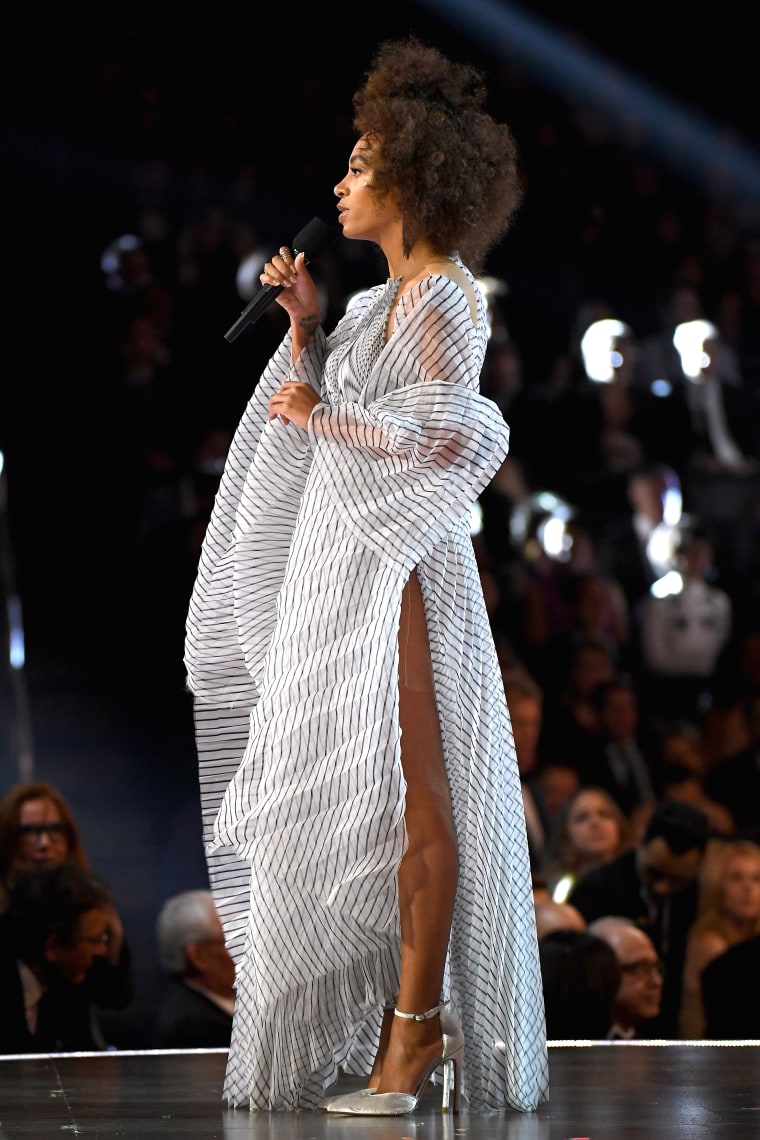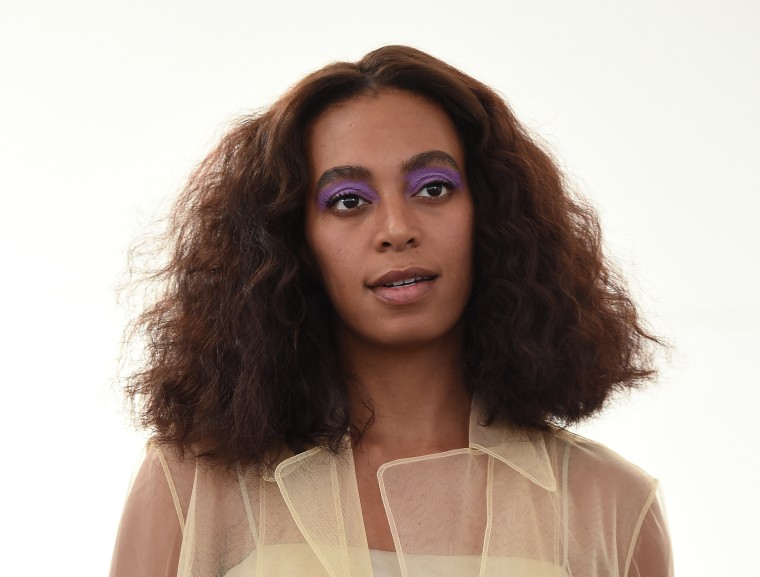Institutional contemporary art spaces such as the Guggenheim have the power to symbolize elite forms of whiteness and call into question one’s sense of true belonging.
Securely understanding this notion, Solange recently used iambic melodies of her album, A Seat at the Table, to transform the Guggenheim into a space of healing for Black and Brown women.
The modern performance artist willed the space into a christened white palace, requesting that all fans wear white to her meditative experience so that she could see the faces of the people who inspired her latest body of work more clearly.
She had one more demand: no phones or cameras. She wanted her supporters to bask in the experience.
Fans dressed in ivory tones sat on the floor of the museum, while press and musicians such as Bjork, Zoe Kravitz and Questlove prepared for the performance on the second and third layer of the spiral ramp.

Spectators of the show looked as if they were attending a wedding or a baptism. Suddenly, four men disrupted the crowd of white by approaching the stage wearing outspoken yellow, burgundy and electric blue color-blocked jumpsuits. Members of the audience began to clap their hands as the four men drew their instruments to interrupt the noise around them.
A trumpet summoned the start of the show, “Solange: An Ode to,” sponsored by the Red Bull Music Academy.
Solange and her two background singers started the performance at highest peak of the circular ramp. They walked the slope barefooted in tan matching sport outfits. The trio marched down, surrounded by eight dancers dressed in white garments.
Related: Solange Knowles’ New Album, ‘A Seat at the Table,’ Is a Sonnet for the Soul
The throng of diverse dancers dressed in similar colors, all sporting different hairstyles and different hair colors. The ensemble’s crisp movements resembled soldiers marching to reclaim a familiar space. As they glided by spectators there was surprising silence as many stretched for a quick glance at Solange.
Once she hit the ground floor of the museum the show started to the tune of “Rise.”
“Fall in your ways, so you can crumble, fall in your ways, so you can sleep at night, fall in your ways, so you can wake up and rise…”
This set the ton for the themes of self-love, inclusivity, connectivity and simplicity -- with Solange performing near white geometric sculptures.
Next was the song “Weary,” a soft tune that reminds fans to consistently question the world around them. Solange incorporated simplistic dance moves into the performance of her melodies, tapping her chest and sides creating her own personal beat.
The singer’s bodily movements often changed as she transitioned songs.
Solange then performed a new version of her song, “Mad,” an anthem that highlights the frustrations of Black individuals due to racism. She displayed her rage by screaming in a way that communicated both anger and deep pain. She then dramatically moved her body uncontrollably, falling to the floor kicking and screaming, almost resembling a woman at church catching the Holy Ghost.
When it was time for her anthem “F.U.B.U.,” an empowerment song for people of color, her performance became more placid. Solange interlocked her hands and swung them in a circular motion, imitating the movements of a soulful reggae singer.
The artist took her performance a step further by walking into the crowd and physically connecting with the audience, touching the shoulders of one of her fans as she sang the lyrics softly. When she happened to identify a Black security guard in the midst, she approached him and pointed at him as she rocked and sang to him. Fans screamed when the singer hopped away from the security guard and started twerking as her band continued to play.
Solange’s older sister Beyoncé has been called the biggest star in the world by many. However, Queen Bey is arguably so big that she is unreachable to most her fans, following only eight individuals back on Twitter.
The candidness displayed at Solange’s show is not unique behavior. The Grammy winner consistently communicates with her fans on social media. When she asks them to create things for her, the entertainer’s fans loyally deliver.
“My twitter fingers almost got the best of me this morning,” Solange said that evening at her show.
Although Solange has experienced great success in 2016 with her third album, A Seat at the Table debuting at number one on Billboard charts and winning the Grammy for Best R&B Performance for her hit single “Cranes in the Sky,” it’s clear that Solange enjoys intimately connecting with her fans.
She has opted to perform in small venues, where she could literally touch her supporters, look them in the eyes and sing to them. Subtly showing that nothing is more important to her than uniting with the people she creates her music for.
After performing "F.U.B.U" Solange covered Stevie Wonder’s ex-wife, Syreeta Wright’s song, “Black Maybe,” a mellow tune that highlights difficulties that Black males encounter due to racism.
Related: Solange Inspired These Chicago Women to Launch ‘Black Girls Break Bread’
Knowles ended her show performing, “Don’t Touch My Hair,” a song that audaciously rejects the practice of touching Black women hair without their consent. As Solange sang, the ensemble of musicians who had been hidden from view emerged, playing trumpets and saxophones.
After the performance, Solange and her dancers formed two lines and executed a choreographic move in which they slanted their bodies like surfers and pointed their hands directly at members of the audience. Fans assumed this symbolized the end of the show, with the band playing the melodies of “Rise” and the dancers running off stage.
Solange then ran up the stairs of the Guggenheim as fans cheered. To the surprise of many, she ran back down and delivered a speech, first thanking her supporters for allowing her to grow. She explained that she wanted to show the world what Black women could do when they are given access to prominent established spaces.
She told the crowd that although she was performing in the Guggenheim, she did not care much about institutions. As she put it, she works hard to “tear the ‘cot damn’ walls down.”
